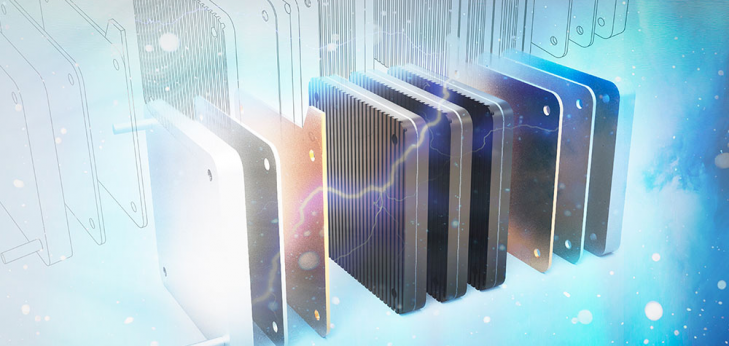
- Teaming up with Toyota and universities
New work at Los Alamos National Laboratory will create polymer fuel cells designed to make electric cars less expensive.
The Laboratory will receive $2.9 million from the Department of Energy and ARPA-E (Advanced Research Project Agency-Energy) for the three-year project, slated to begin on Feb. 1, 2019.
Other institutions that are helping the Lab with this project include Toyota, Rensselaer Polytechnic Institute, University of Texas at Austin, University of New Mexico and Xergy Inc.
A fuel cell car is an electric car that will only run if the operating temperature of the engine is hydrated and below 100 degrees Celsius (212 degrees Fahrenheit). If the internal temperature goes above 100 degrees Celsius, the water will evaporate and the car won’t run.

Yu Seung Kim has been working on research in the Materials Synthesis and Integrated Devices group for 16 years.
Lowering temperature, going waterless
Yu Seung Kim and his team’s job is to create a fuel cell that will allow an electric car to run without having to keep the engine cool or using water.
“I proposed to make a fuel cell that will work above 100 degrees Celsius, up to 230 degrees Celsius (446 degrees Fahrenheit) without using water,” Kim said.
Kim said that if they could develop the fuel cells successfully, radiators in electric cars could be smaller, and even eliminated.
The radiator in a vehicle keeps the engine cool. But with the new fuel cells, the engine won’t have to be as cool, and the radiator could be much smaller.
According to Kim, a smaller radiator would make the vehicle lighter and less expensive by creating room for the fuel cell stack, which would increase the power by 20-30 percent. Kim added that using the new fuel cell technology would also allow other components such as the humidifier and demister to be removed.
Striving for luxury
The fuel cells will be made of an ion-pair coordinated polymer membrane that is designed to provide a higher rate of proton conductivity across a wide range of temperatures. The new fuel cells also will help increase the power of car.
“We can increase the power to make a Tesla-like fuel cell car,” Kim said. “People think of Tesla as a fancy car, and people like to have a fancy car. They have a nice design, power, speed and luxury.”
While the new fuel cells will certainly make electric cars fancier, Kim says his goal is to make a fuel cell car that is affordable, as opposed to a battery-powered electric car.
“This will be a very challenging project, but the reward will be great. If successful, this will change the paradigm of fuel cell technology,” Kim said.
He has spent his entire 16-year career at Los Alamos in the Materials Synthesis and Integrated Devices group. Developments from this project can be used for other conversion technologies, such as ammonia production and high-temperature direct liquid fuel cells.
Read the most up to date Fuel Cell and Hydrogen Industry news at FuelCellsWorks




